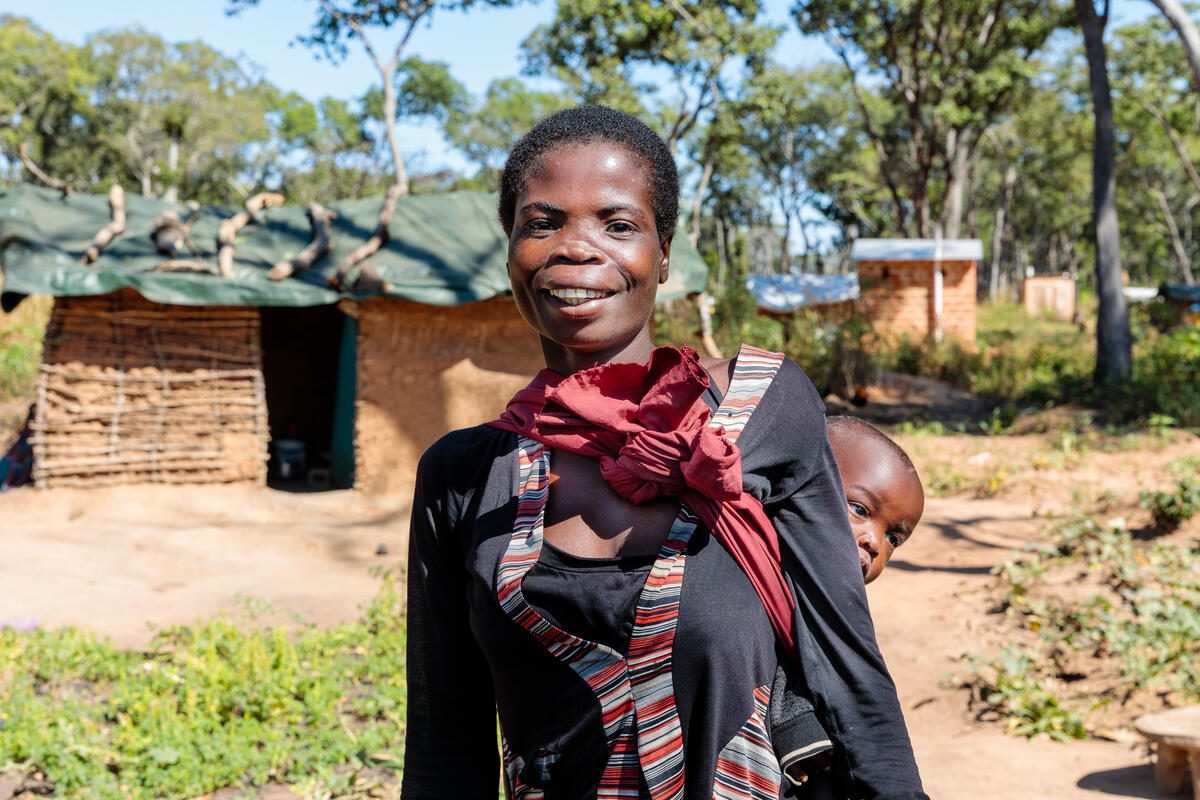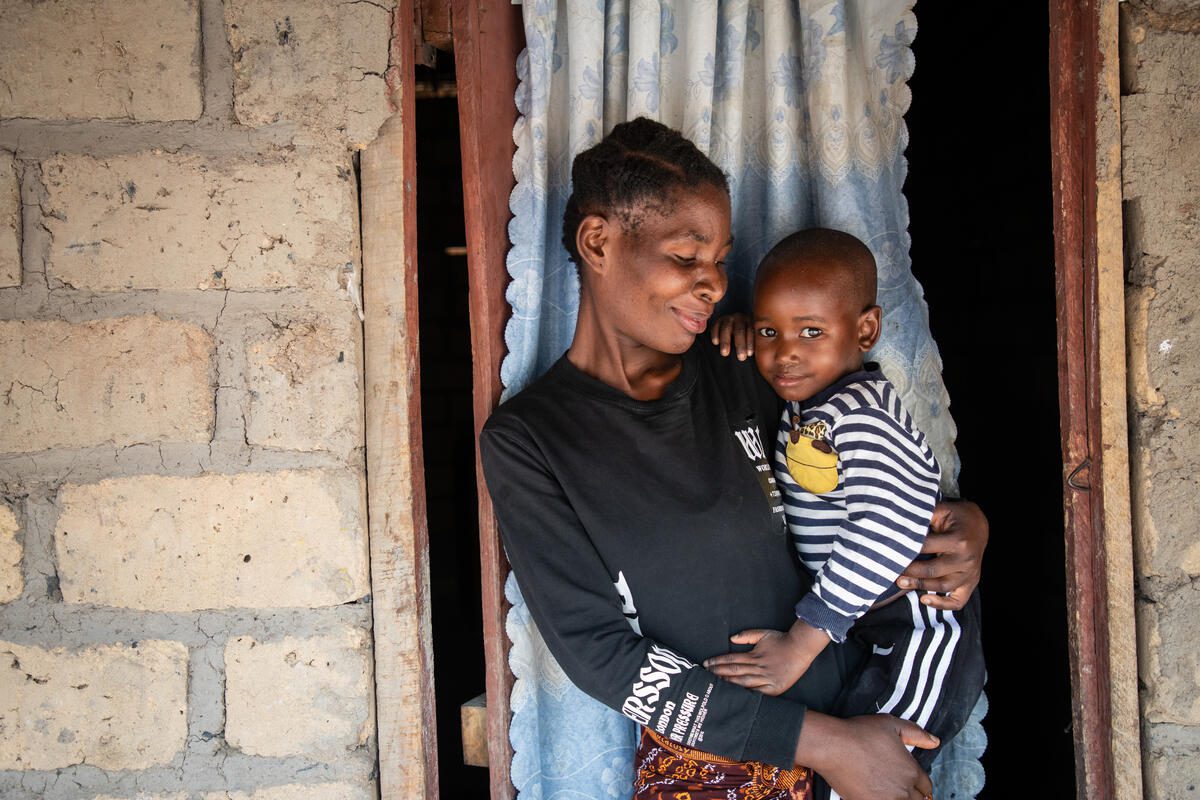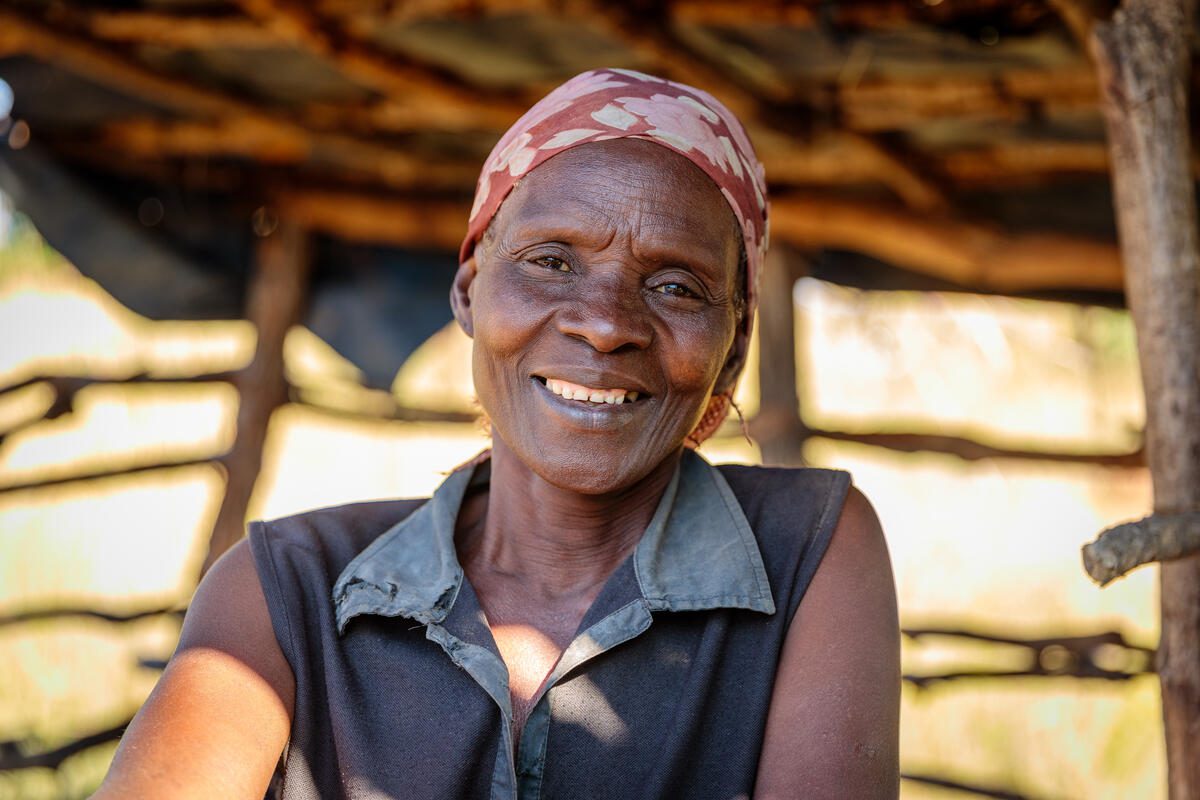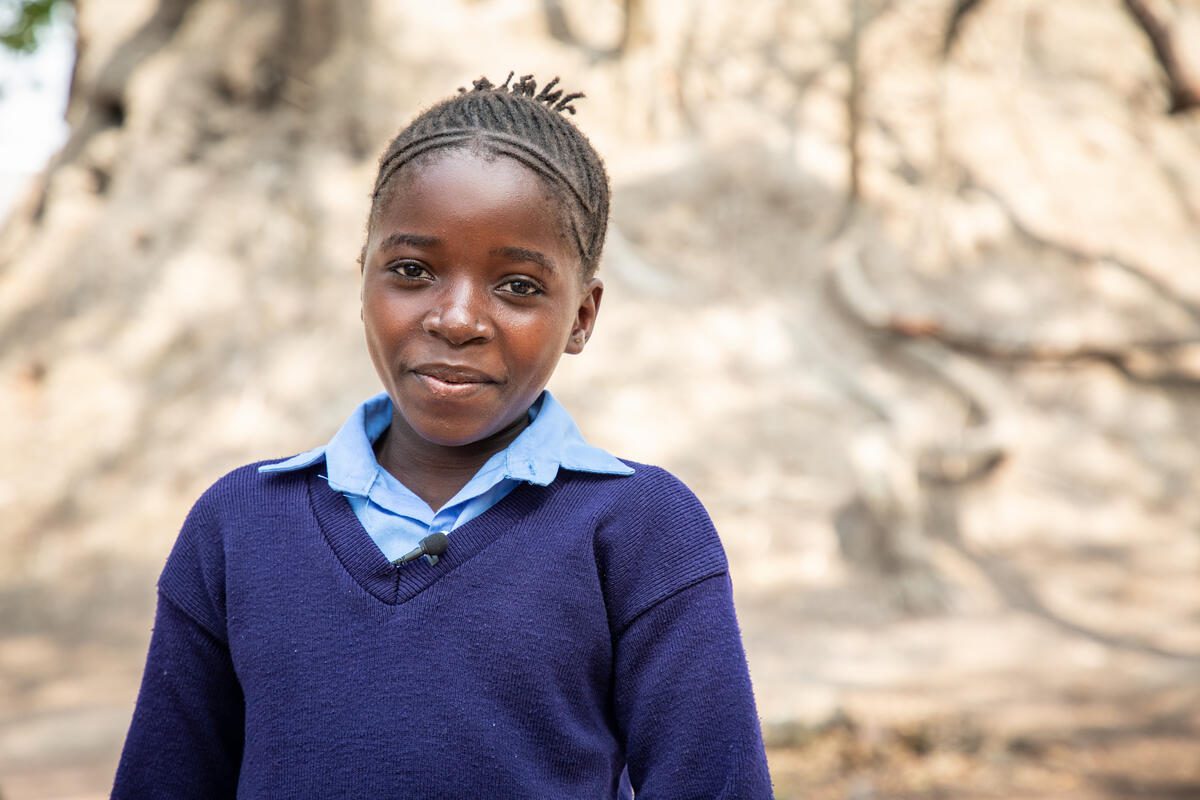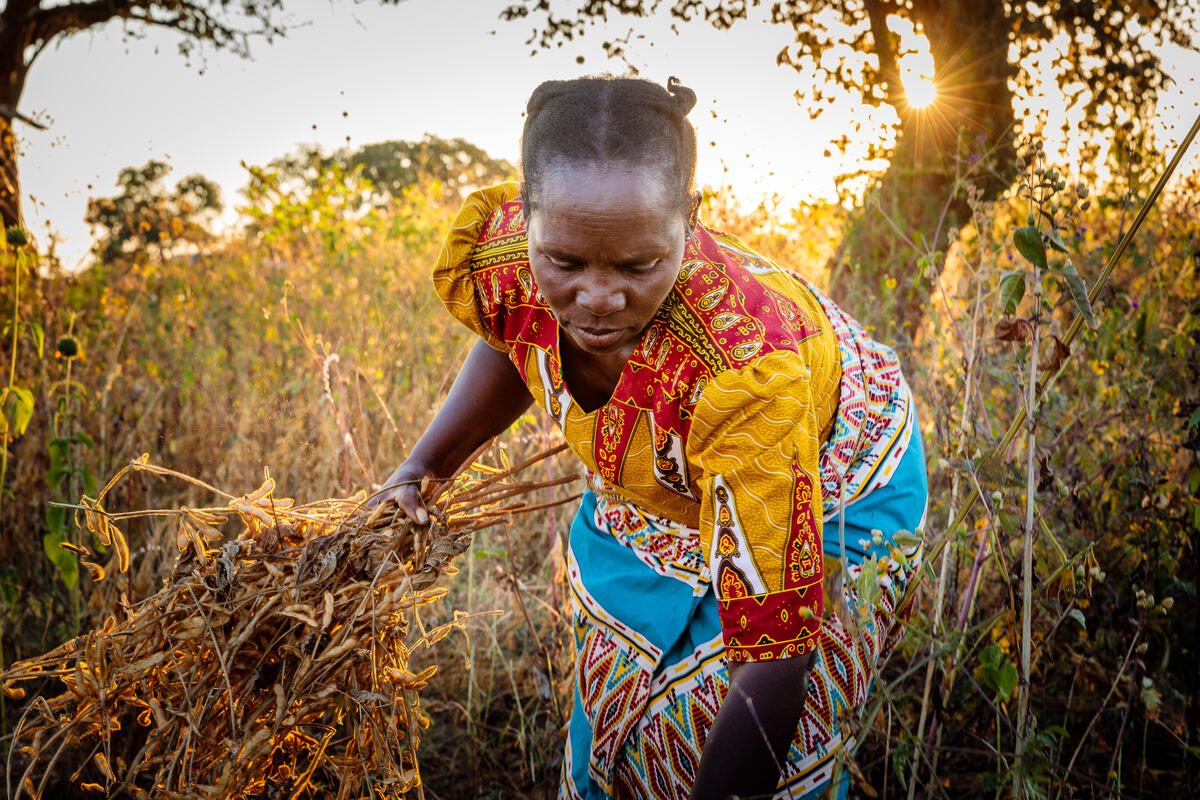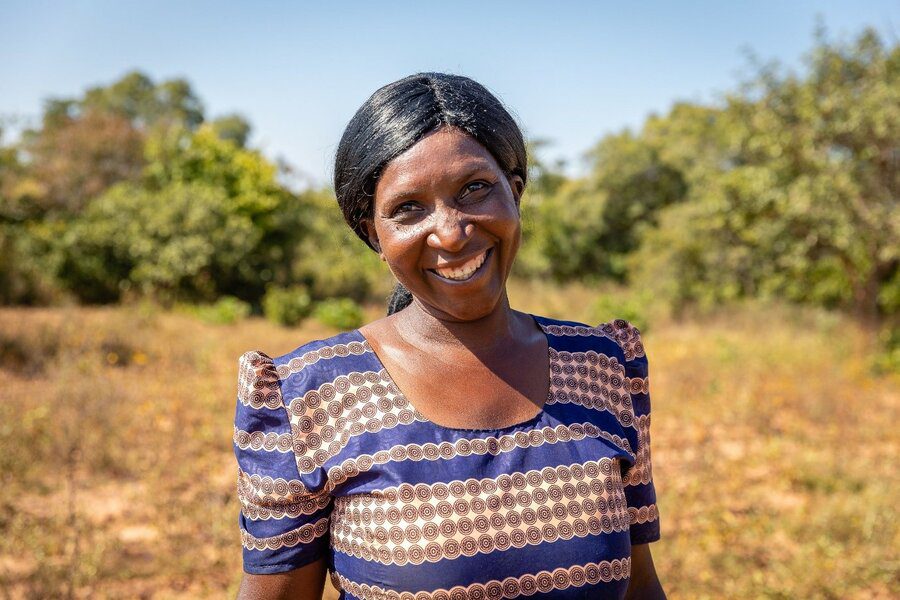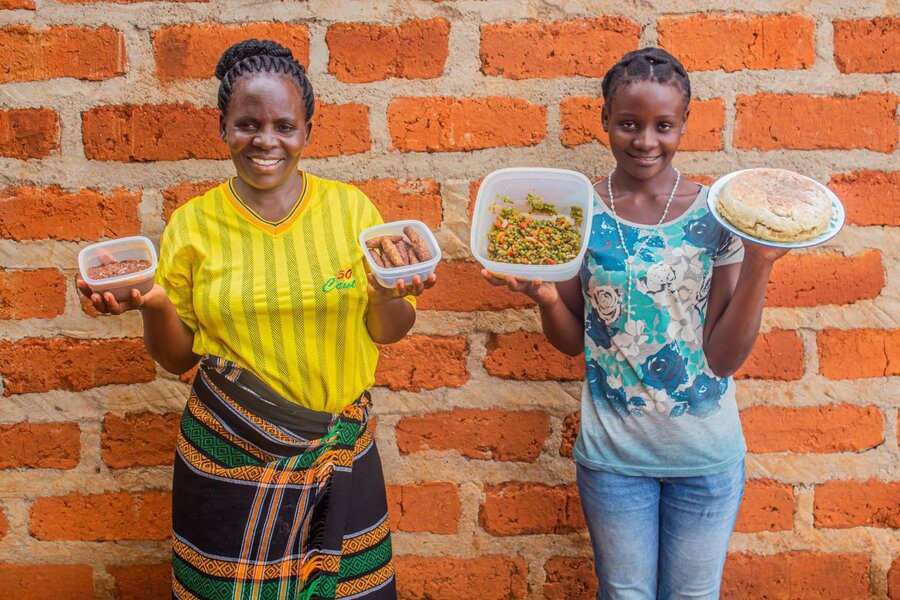Paving the Way to Zero Hunger
U.N. World Food Programme Goodwill Ambassador Andrew Zimmern traveled to Zambia to learn how the climate crisis is impacting the country’s food systems.
Meet the People We Serve in Zambia
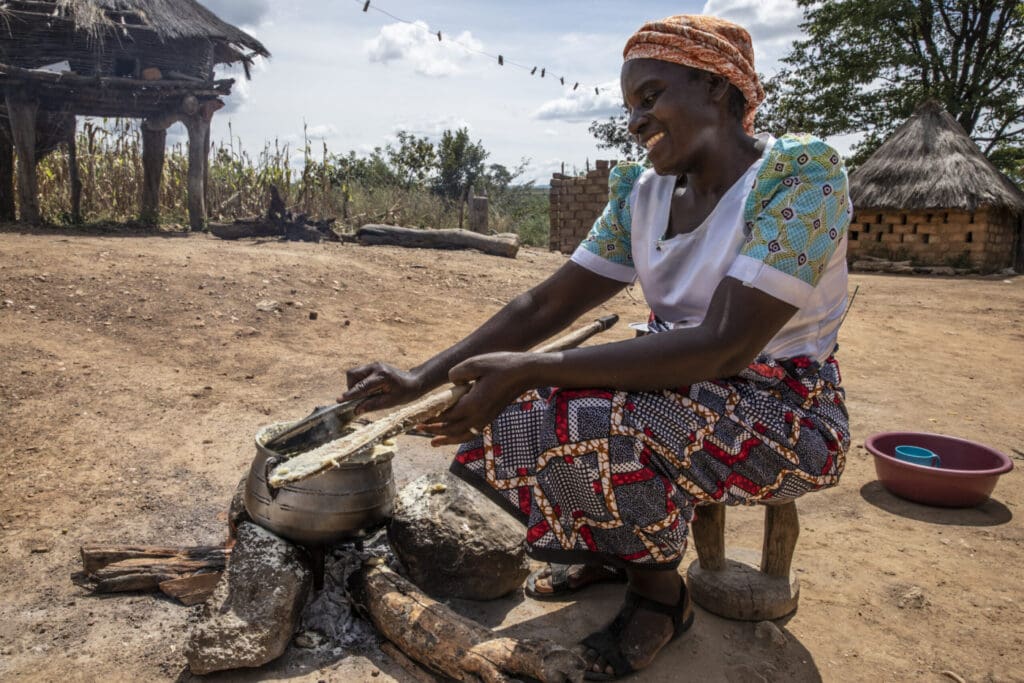
Priscilla, a 48-year-old farmer with seven children, lives in the rural Gwembe District – one of the driest areas in southern Zambia. The latest rainy season was so dry that her entire crop of cowpeas could not be harvested. “I’m not too worried that my (cowpeas) crop failed,” explained Priscilla. “WFP has helped us diversify so I have backup crops like sorghum, sunflower, peanuts and corn.”
Crop diversification means farmers are protected and can still feed their families when one crop fails. Moreover, with air-tight bags, Priscilla can store this food for long periods of time. What her family doesn’t eat, they can sell at their local market for cash.
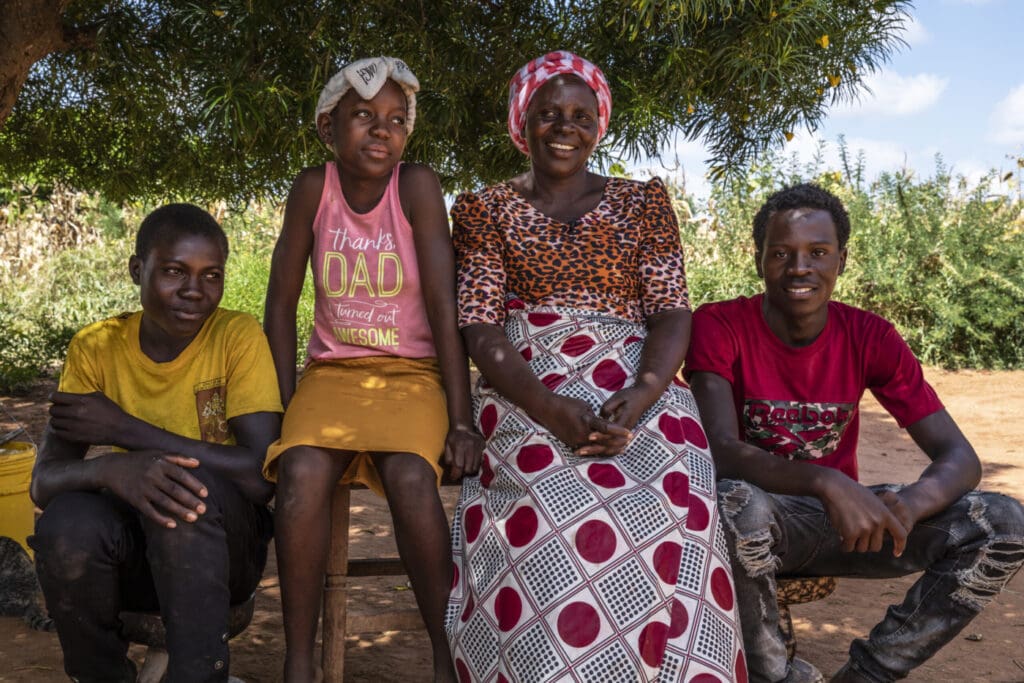
Agriculture fuels the local economy in the Monze District, and people depend on rain-fed crops to survive. However, the region is prone erratic rain and frequent dry spells which have meant decades of hunger for farmers. For Emeldah, a single mom and farmer in Monze, 2017 was a turning point. Through a local farmers club, supported by the U.N. World Food Programme, she received the training and resources she needed to diversify her crops. “I have white and orange corn, cowpeas, groundnuts and sunflowers,” said Emeldah.
Emeldah also started a business selling food made out of her crops, including cowpea sausages and soybean cakes. She is saving up to one day open her own restaurant.
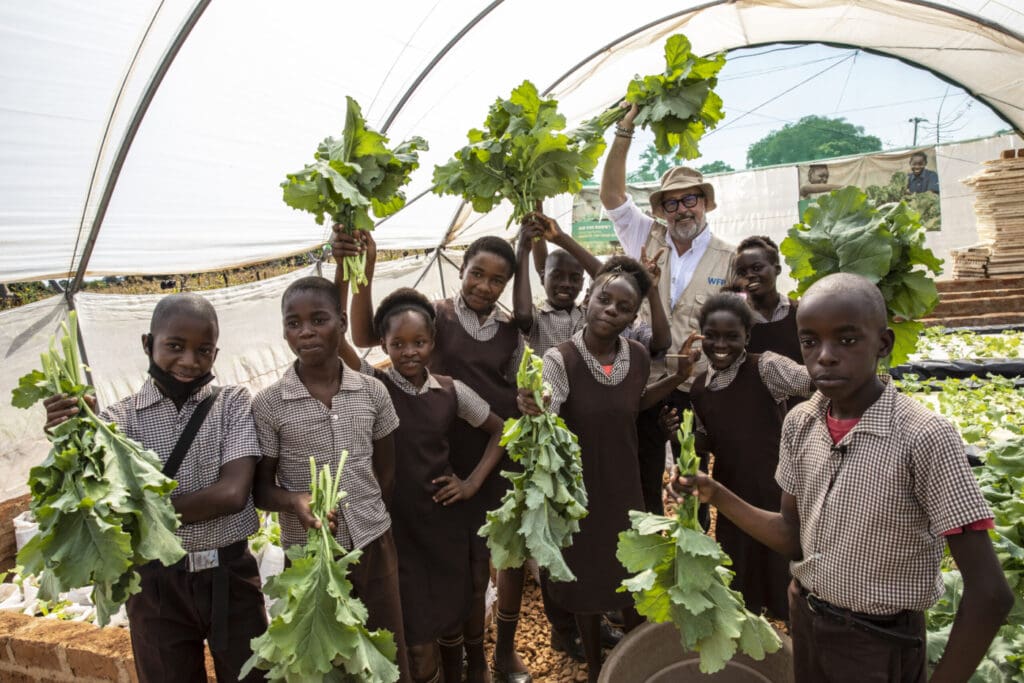
In January 2021, the U.N. World Food Programme built a hydroponics greenhouse at Gwembe Primary School to supplement school meals and improve students’ health, nutrition and education. Since the first harvest of vegetables in February 2021, the school has produced nearly 2,000 pounds of vegetables. The greenhouse is now run entirely by the students.
With hydroponics, communities can grow food with a limited amount of water. For a drought-prone region, this innovation is vital to ensuring schoolchildren have the food they need to focus on their studies.

